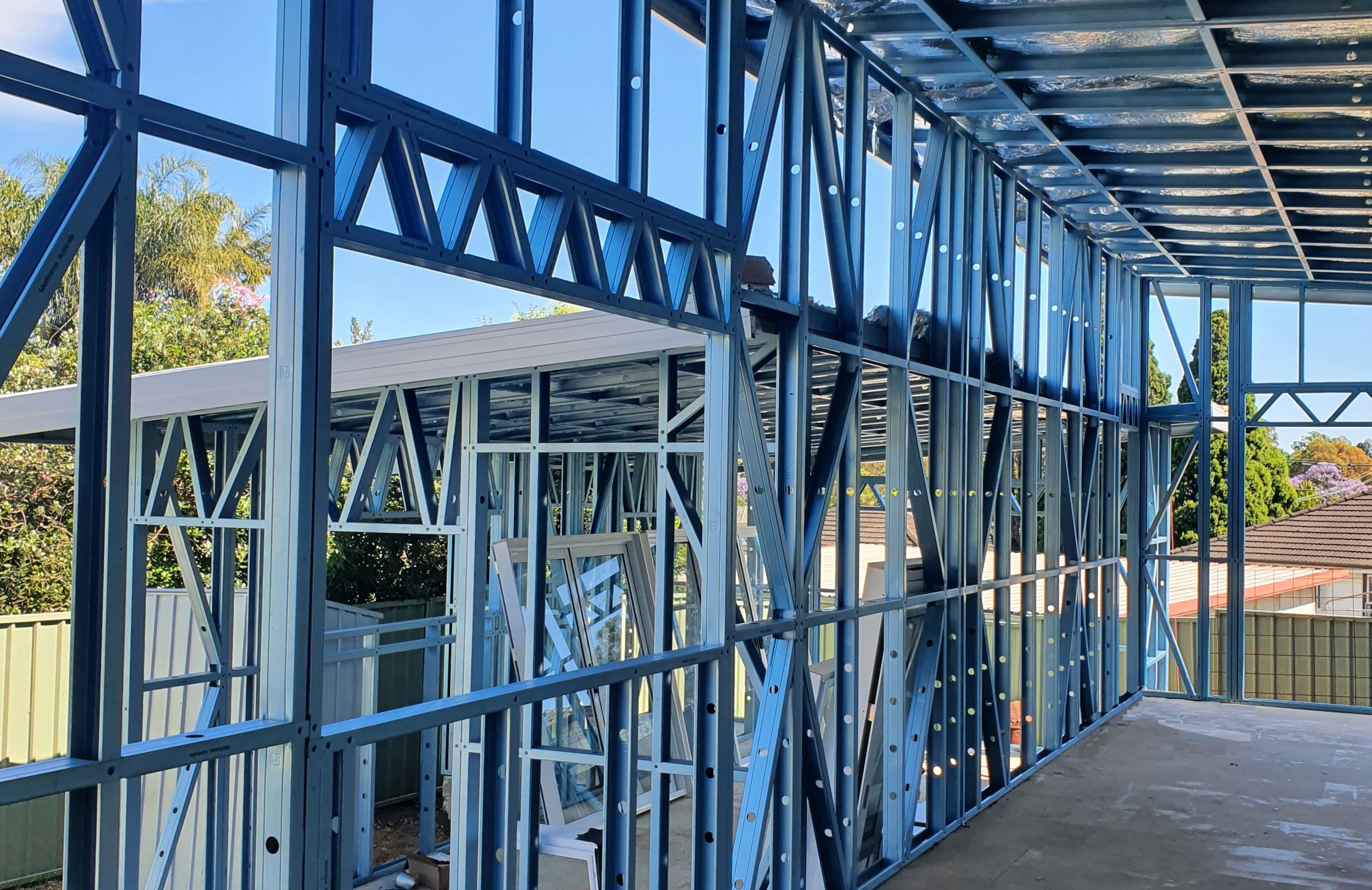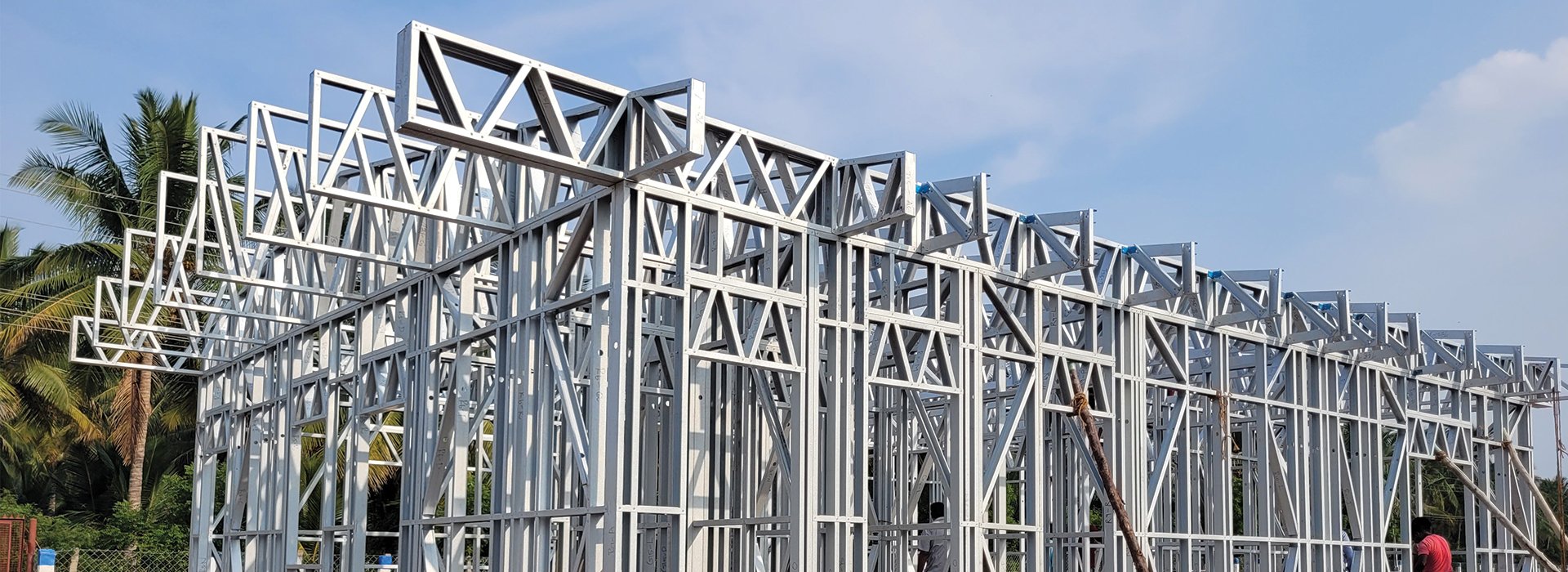Light Steel Frame
Built for you. Built for our planet.
Start by ordering today.

The many benefits of light steel
Home Owners
Light steel gauge’s high strength results in safer structures, less maintenance and slower structure ageing.
Not vulnerable to any type of fungi or organism, including termites.
Less probability of foundational problems - less weight results in less movement.
Less probability of damage in high winds - stronger connections, riveted and screwed versus nailed.
Fire resistant.
Builders
Lighter than other framing materials – no lifting equipment required on site. One person can easily carry a 5-metre fabricated panel.
Easy material selection – no need to cull or sort.
Straight walls and square corners
Call backs due to cracks are eliminated.
Small snag list.
Less scrap and waste (2% for steel vs. 20% for lumber).
Price stability – steel prices have been flat since 1980 and are not volatile.
No drying out period in wet weather, resulting in no delays and quicker construction.
Why Use Steel
Highest strength-to-weight ratio among common building materials.
Its non-combustible nature means it is fire-resistant and will not contribute fuel to the spread of a fire.
Inorganic – will not rot, or warp.
With external walls around 6% thinner than a double-skin brick wall, more floor space is gained.
Dimensionally stable – does not expand or contract with moisture content.
Produced in strict accordance with national standards with no regional variations, the material quality is consistent.
Extremely accurate – light steel frame dictates a high degree of accuracy of building dimensions. Being computer designed and rolled, the allowable tolerances are minute (as low as 5mm), thus ensuring a perfect home every time.
Environmental Benefits
In North America, more steel is recycled each year than aluminium, plastic and glass combined – the industry’s overall recycling rate is 64%.
Every ton of steel recycled saves 2,500 pounds of iron ore.
Through the basic oxygen furnace steel making process, steel framing uses a minimum of 25% recycled steel.
Requires less than half the electricity to heat and cool to thermal comfort levels than brick houses.
Unlike the treatment of timber, no toxic chemicals are used to treat steel.
Almost all cutting and sizing is done in-factory by automated machinery, resulting in minimal wastage. Any waste steel can be recycled.






